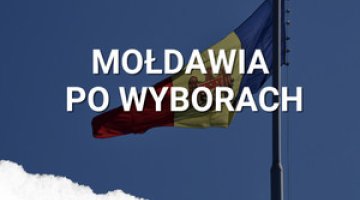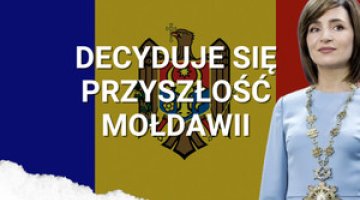End of the dual government in Moldova
On 14 June the ruling Democratic Party of Moldova (PDM), controlled by the oligarch Vlad Plahotniuc, officially announced that it would move into opposition. At the same time the government of Prime Minister Pavel Filip (one of Plahotniuc’s close collaborators), which the PDM appointed in January 2016, submitted its resignation. As a result, full power in the country has been assumed by the government of Maia Sandu, which was voted in by parliament on 8 June; it is made up of the pro-Russian Party of Socialists (PSRM) and the pro-European ACUM bloc (which includes the Party of Action and Solidarity [PAS] led by Sandu, and the Dignity and Truth Party [DA] of Andrei Năstase). A few hours after the PDM’s decision was announced, the blockade of ministerial buildings was lifted; this had been organised with the help of demonstrators paid by the PDM shortly after the new government was appointed. Shortly after the resignation of Prime Minister Filip, Plahotniuc left the country, and his present whereabouts are unknown (he may have gone to Turkey or London, according to the latest rumours), although the PDM’s leadership stated that this was only a “short trip for family reasons”. Finally, the political conflict was resolved on 15 June, when the Constitutional Court annulled its own decision of the previous week to delegitimise the new government. The end of the crisis has been welcomed by the EU, the US and Russia.
The political crisis in Moldova began when – after Sandu’s government was formed – the PDM accused the new coalition of usurping power, appealing to the rapid judgement made by the Constitutional Court (which has been subordinate to the party). The Court held that the deadline to hold a vote of confidence on the Sandu cabinet expired on 7 June, and that parliament should thus be dissolved. At the same time, many institutions (including the police and other law enforcement agencies) refused to recognise the sovereignty of the new government, which ultimately led to the existence of two governments.
Commentary
- The PDM’s decided to give up the struggle for power immediately after Plahotniuc’s meeting with Derek Hogan, the US ambassador in Moldova. It is possible that the oligarch received some security guarantees for himself and at least some of his wealth. Even though most of the forces involved in the political crisis in Moldova (both internal and external) wanted to remove Plahotniuc from the political scene, they did not want to put too much pressure on him, fearing that if the oligarch had been unable to escape, he could have opted to resolve the situation by force, although it seems that he had no such intentions. Plahotniuc’s actions, including accusing the new coalition government of usurping power, were aimed not so much at keeping himself in power, but rather at gaining time to protect his interests and destroy part of the evidence against him. Plahotniuc has been accused of being directly or indirectly involved in numerous corruption scandals (including the embezzlement of US$1 billion from the Moldovan banking sector in 2014); so he must have realised that losing political influence would pose a threat to his assets and expose him to the risk of imprisonment.
- The coalition which PSRM and ACUM formed on 8 June is merely a temporary and tactical affair. The cooperation agreement they signed is based on pushing through a legislative package to ‘de-oligarchise’ the country, defined here as purging the country’s public institutions of Plahotniuc’s subordinates. After this package is adopted, it is most likely that the next steps will involve the government’s resignation and early parliamentary elections. In this context, one of the reforms planned by the coalition is to replace the mixed electoral system (introduced at Plahotniuc’s initiative) with a proportional system (the bill has already passed its first reading). The PSRM is the favourite to come top in the vote, as it has recently made efforts to get rid of the stigma of its image as a satellite of the PDM. President Igor Dodon will also be able to present himself as the politician who brought about the overthrow of the hated oligarch. This may further boost the Socialists’ popularity (according to polls 35-40% of voters support them), and that may even allow them to govern alone. Also, the coming months may see the disintegration of the PDM, which has now been severely weakened; members of this group may join the PSRM. A boost for that party will contribute to its rising tensions with ACUM, especially in the context of the local elections planned for this year.
- The coherence and indeed the very future of ACUM remain uncertain. The bloc contains some deputies who are unhappy at forming a coalition with the Socialists; for example, some of them have not supported the appointment of the PSRM’s leader Zinaida Greceanîi to the post of parliamentary speaker. Further problems for the pro-European bloc may include the long-standing tensions between the parties’ leaders Sandu and Năstase, as well as the murky connections between the latter and Victor & Viorel Țopa, two Moldovan businessmen who had come into conflict with Plahotniuc and have been in exile in Germany for several years (a Moldovan court sentenced them for blackmail and extortion in absentia).
- The formation of the PSRM-ACUM coalition was made possible by the unexpected support which the two factions received from the EU, the US and Russia. All three parties had had an interest in removing Plahotniuc from power. For the West, he was the main blockage to the process of modernising the state, despite his pro-Western narrative (which only served to discredit the EU in the eyes of the Moldovan population). For Moscow, its role in creating the new coalition had both local and international dimensions. The Russian government wanted to present itself primarily as a pragmatic actor, which is both willing to cooperate with its Western partners and essential to resolving the important problems in the post-Soviet area. It seems certain that the Kremlin will try to use the example of the efficient ‘de-oligarchisation’ of political life in Moldova to persuade its Western partners that a common solution (consistent with the Russian vision) to the Donbas conflict can also be found. At the local level the Kremlin has no doubt that the oligarch’s departure will strengthen the positions of President Dodon (getting him re-elected in the elections scheduled for the end of 2020) and of the socialist party (as this coalition is only temporary) in the upcoming early parliamentary elections. Another reason why Russia decided to remove Plahotniuc from power was that Moscow took a dim view of the oligarch’s increasingly extensive cooperation with Transnistria, which would have risked weakening Russian influence in the separatist republic.





